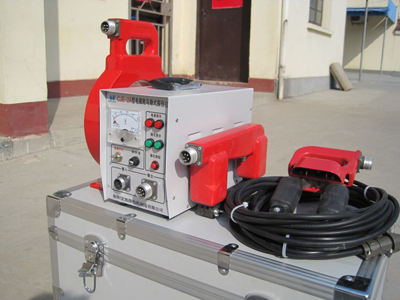
2016-11-11 Rongda test 1302 times

Detection Purpose: Inspect mechanical parts, raw materials, welds and other defects
Detection range: Surface or near surface of ferromagnetic products and parts
The principle of magnetic particle inspection, is made of magnetic metal material artifacts, magnetized to saturation level, if the material is very uniform, no defects, the current in the produced uniform distribution of magnetic field lines. If the surface or near surface area there are cracks, slag inclusion, or the defects such as porosity, these defects will hinder the field lines through, produce magnetic flux leakage phenomenon, make the defects on both sides of the surface produces a pair of N, S very local magnetic field. At this time, If the magnetic powder or the magnetic powder suspension is scattered on the surface of the workpiece under inspection, the magnetic powder will be absorbed by the leakage magnetic field, and the magnetic powder will gather, thus the image of the defect will be clearly displayed.
In industry, magnetic particle inspection can be used for the final inspection of finished products to ensure that the workpiece will not produce harmful defects on the surface after various processing procedures (such as welding, metal heat treatment, grinding). It can also be used in the inspection of semi-finished products and raw materials such as bars, billets, forgings, castings, etc., in order to find the original surface defects. In railway, aviation and other transportation departments, smelting, chemical industry, power and various machinery manufacturers, magnetic particle inspection is often used for important steel parts and components during regular maintenance of equipment, so as to find fatigue cracks and other defects in use and prevent catastrophic accidents in continued use of equipment.
Last article: NO!
Next article: NO!